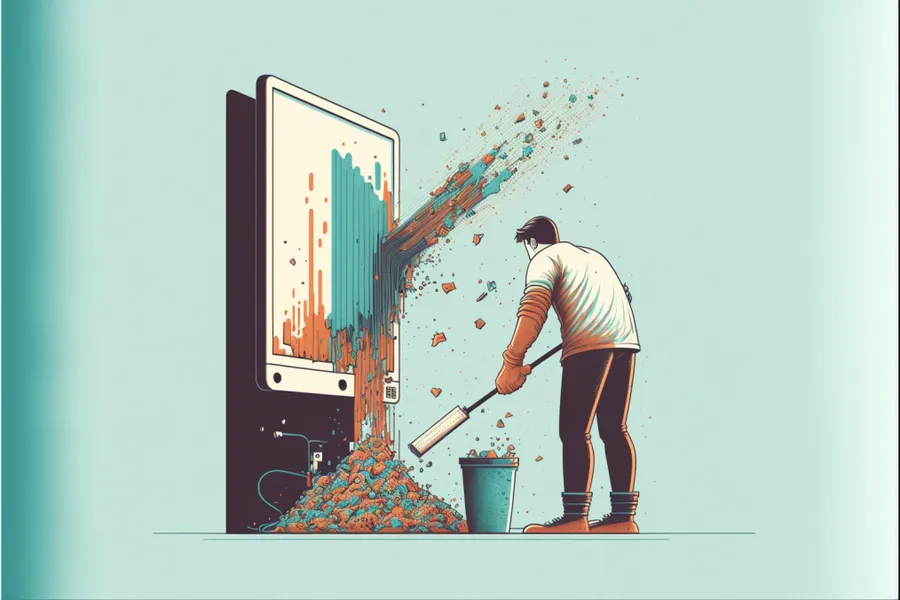· Data · 5 min read
5 Steps to Clean and Normalize Your Data for Analysis

Intro
Data is an essential component of many business and research processes, and the quality and structure of the data can significantly impact the accuracy and usefulness of the insights and predictions that are derived from it. In this blog post, we will delve into the various stages of data cleanliness and normalization, starting with raw data and ending with production-ready data. We will explore the steps and techniques involved in transforming raw data into a form that is ready for analysis and use, and provide tips and best practices for ensuring your data is as clean and consistent as possible. Whether you are working with structured or unstructured data, these tips and techniques will help you get the most value out of your data and support informed decision-making.
Stages Summary
Here are the stages we will take data through, in order to get it ready for analysis and reporting
| Stage | Description |
|---|---|
| Raw Data | The initial state of the data, which is often unstructured and may contain a large number of errors, inconsistencies, or missing values. |
| Structured Data | The raw data is transformed into a structured format, such as a spreadsheet or a database table, to make it easier to work with and analyze. |
| Clean Data | The structured data is cleaned to remove errors, inconsistencies, and missing values. This may involve tasks such as correcting typos, standardizing formats, and filling in missing values. |
| Normalized Data | The clean data is transformed into a consistent, standardized format to make it easier to compare and analyze. This may involve tasks such as merging similar columns, converting data types, and removing duplicates. |
| Production-Ready Data | The analyzed data is transformed into a format that can be easily consumed by downstream systems or applications, such as a report or a dashboard. |
Stages detailed
Let’s talk a little more about each of the stages
Raw Data
Raw data is the initial state of the data, which is often unstructured and may contain a large number of errors, inconsistencies, or missing values. This type of data may be collected from a variety of sources, such as surveys, experiments, or online platforms, and may be in a variety of formats, such as text, images, or audio.
One of the main challenges with raw data is that it is often incomplete or inaccurate, which can impact the accuracy and reliability of any insights or predictions that are derived from it. Therefore, it is important to carefully assess the quality and completeness of the raw data before proceeding with any analysis.
Structured Data
To make raw data easier to work with and analyze, it is often transformed into a structured format, such as a spreadsheet or a database table. This process involves organizing the data into columns and rows, with each column representing a specific attribute or feature and each row representing a specific data point or record.
Structured data is typically more organized and standardized than raw data, which makes it easier to manipulate and analyze. However, it is still possible for structured data to contain errors, inconsistencies, or missing values, which can impact the accuracy and reliability of the analysis.
Clean Data
The next step in the data cleanliness process is to clean the structured data to remove errors, inconsistencies, and missing values. This may involve tasks such as correcting typos, standardizing formats, and filling in missing values.
Correcting errors and inconsistencies is important for ensuring that the data is accurate and reliable, as even small errors can have a significant impact on the results of the analysis. For example, a typo in a numerical value could lead to incorrect calculations or a misclassified categorical value could skew the results of statistical tests.
Filling in missing values is also important, as missing values can introduce biases or errors into the analysis. There are various techniques for handling missing values, such as imputation (filling in the missing values with estimates based on the other values in the dataset) or dropping the rows or columns with missing values. The appropriate technique will depend on the specific characteristics of the data and the goals of the analysis.
Normalized Data
After the data has been cleaned, the next step is to normalize it, which involves transforming it into a consistent, standardized format to make it easier to compare and analyze. This may involve tasks such as merging similar columns, converting data types, and removing duplicates.
Normalizing the data helps to ensure that it is consistent and comparable, which is essential for making meaningful and accurate comparisons and for applying statistical techniques or machine learning algorithms. For example, if different columns contain similar information but are formatted differently, it may be difficult to compare them or to apply statistical tests. Normalizing the data helps to remove these inconsistencies and make the data more uniform.
Production-Ready Data
The final step in the data cleanliness and normalization process is to transform the analyzed data into a format that can be easily consumed by downstream systems or applications, such as a report or a dashboard. This may involve tasks such as formatting the data for display, creating charts or graphs, or generating summaries or metrics.
Production-ready data is the final form of the data that is used for analysis, building reports etc.
Conclusion
It’s extremely important to follow this process thoroughly. It’s our job as data professionals to ensure that the information we are giving to businesses is accurate. If decisions are made with incorrect or misleading data, it could be detrimental to the business.